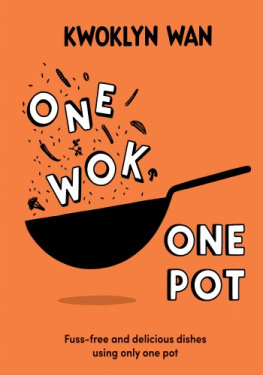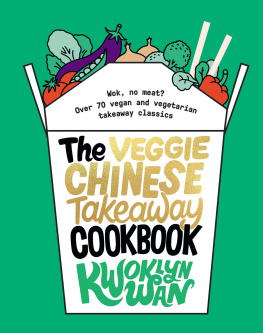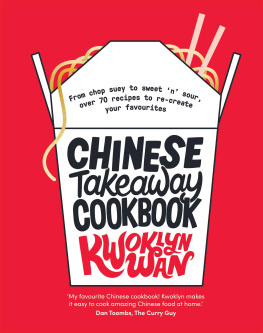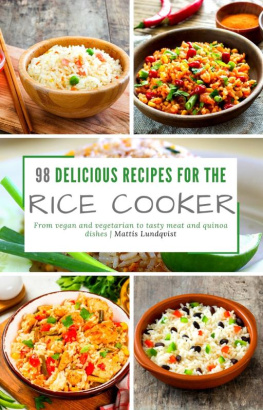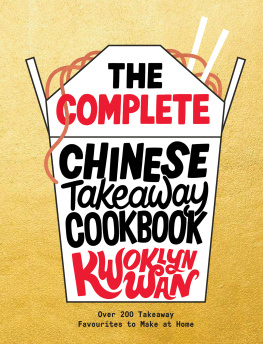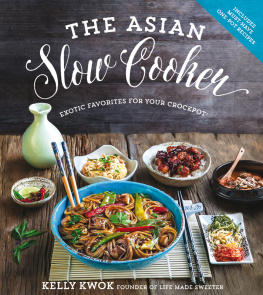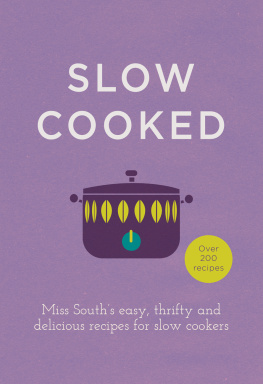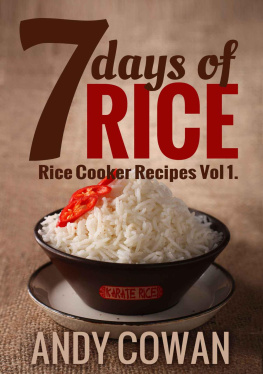Managing Director Sarah Lavelle
Commissioning Editor Stacey Cleworth
Designer Alicia House
Photographer Sam Folan
Food Stylist Katie Marshall
Props Stylist Agathe Gits
Cover Typography Adam Hayes
Head of Production Stephen Lang
Senior Production Controller Sabeena Atchia
Published in 2023 by Quadrille an imprint of Hardie Grant Publishing
Quadrille
5254 Southwark Street
London SE1 1UN
quadrille.com
All rights reserved. No part of this publication may be reproduced, stored in a retrieval system or transmitted in any form by any means, electronic, mechanical, photocopying, recording or otherwise, without the prior written permission of the publishers and copyright holders. The moral rights of the author have been asserted.
Cataloguing in Publication Data: a catalogue record for this book is available from the British Library.
Text Kwoklyn Wan 2023
Photography Quadrille 2023
Design Quadrille 2023
Cover Typography Adam Hayes 2023
eISBN 9781787139091




Most cultures across the globe have their own version of a one-pot meal, contributing to a worldwide collection of dishes to tease and tantalize that all share one simple defining factor they are all prepared in one pot, be that a pan, slow cooker, rice cooker or wok!
Some hardcore devotees would insist that to be a true one-pot meal, all the elements of the meal must be cooked solely in one pot and that serving a side dish is cheating. Personally, I think its open to interpretation. In my humble opinion, if one-pot cooking is all about ease and comfort, nothing whispers home-cooked satisfaction more than a lovingly prepared one-pot meal paired with a bowl of steamed rice or even a soft bread roll for dunking. Lets be honest, you wouldnt think twice about pairing your one-pot cup of tea with a cookie or two.
Influenced by my heritage and the many delicious East and Southeast Asian cuisines and flavours and regional specialities from Japan and Korea to Thailand and Malaysia I have designed the recipes in this book in the hopes of inspiring you to relax in your kitchen and get back to a simpler way of cooking, but as always, to never lose out on flavour and texture.
For those hectic households with after-school clubs competing with meal times, what easier way to satisfy the family than to have a ready-prepared pot bubbling away on the stove when the afternoon rush is over, so that everyone, including the household chef, can take a seat and enjoy the meal together; for the young professionals living life on the run, a slow-cooker meal prepared the night before and quickly flicked on in the morning before leaving for work will be a hearty smell to welcome them home at the end of a busy day; and for the humble student living in shared accommodation with only one pan to their name, pot rice and noodle bowls will keep them fed and probably quite popular amongst housemates.
One-pot cooking is all about keeping it simple: whether youre pressed for time or you just dont have the space and equipment for creating large meals, these recipes are the perfect space- and time-saving answer to pleasing your taste buds.

Rice
There are so many different types to choose from. Jasmine rice is commonly used throughout China and is slightly fragrant, but you can use most long-grain varieties and some medium grains too. Long-grain varieties include basmati, jasmine, wild rice and American long-grain rice. While arborio, California calrose and Chinese black rice or Emperors Rice are all medium-grain.
In some of my dishes I use glutinous rice, which when cooked is very, very sticky. Though the name may suggest it contains gluten, it is in fact completely gluten-free. The name comes from the fact that when the grain is cooked it becomes like glue.
Rice noodles
Rice noodles are made from rice flour and water, but in some brands tapioca or cornflour (cornstarch) is used to improve elasticity and chewiness. You can buy rice noodles in varying thicknesses, from string-like noodles like vermicelli to thick, fat, flat noodles, which are normally referred to as ho fun.
Many supermarkets now sell the ready-to-wok noodles, but you can use the dried packet noodles too; simply rehydrate them in boiling water before using. Instructions are always on the packet so be sure to follow those.
Glass noodles
Glass noodles, also known as cellophane noodles, are a type of transparent noodle made from starch (such as mung bean starch, potato starch or tapioca starch). Used in stir-fries, soups and spring rolls, these noodles add texture and bite to a dish. Like rice noodles, you can buy these noodles dried and rehydrate them in boiling water when you need to use them.
Chinese sausage (lap cheong)
Lap cheong is a type of dried fatty sausage normally made from pork, though other varieties, including chicken and duck, are now available. Often eaten as part of dim sum and steamed or cooked inside rice parcels, the sausages are sweet, sometimes smoky and utterly delicious. The tradition of Dim Sum began in ancient China where travellers along the old Silk Road broke up their journey by stopping at tea houses. As it was discovered that drinking tea aids digestion, small pieces of food were offered with the tea. In Cantonese this is referred to as Yum Cha which is the complete act of having a meal while drinking tea.
Garlic, ginger and spring onion aka The Holy Trinity
This threesome features heavily in Chinese cooking, and a dish would only truly be considered Cantonese with the inclusion of at least one, if not all three of the Holy Trinity of aromatics garlic, ginger and spring onion.
Chilli paste
Doubanjiang: A Chinese chilli bean paste that is savoury and spicy, made from fermented broad beans, soya beans, flour, salt and chillies, which adds a complex flavour to the dishes it is cooked with. Throughout China there are different variations of the paste; the most well known is from Sichuan.
Gochujang: A Korean paste that is fundamental to many dishes. It is red in colour and made from chilli (red pepper) flakes, glutinous rice, fermented soya beans and salt. It has a rich flavour packed with umami.
Chilli powder
Chilli powders come in a range of heats so you and your dinner companions should consider which one to use. Some like it hot and some can barely handle the mere thought of spice, so where a recipe calls for chilli powder, use your favourite brand and heat level and, as you cook, always remember to taste and adjust the seasoning to your personal preference.
Light soy sauce
Light soy sauce is made from fermented soya beans and wheat; it has a strong aromatic umami and savoury flavour, making it ideal as a marinade, dressing, sauce and table condiment. Gluten-free soy sauce is also available from some brands.
Dark soy sauce
Fermented for a much longer time to produce a rich, dark, sweeter sauce dark soy sauce is packed with umami and is perfect for marinades and colouring your dishes. Look out for tamari for a gluten-free option.
Next page
